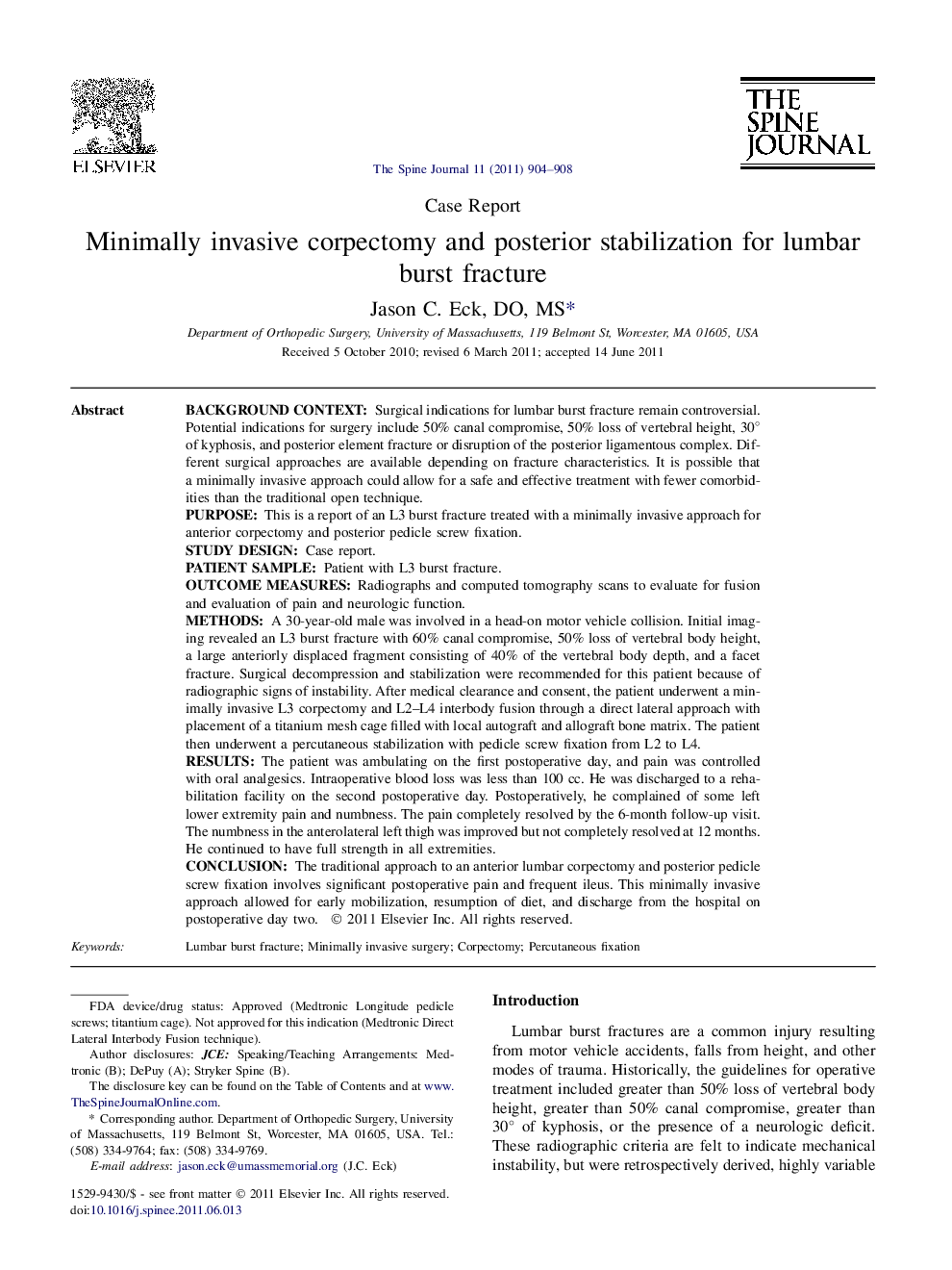| کد مقاله | کد نشریه | سال انتشار | مقاله انگلیسی | نسخه تمام متن |
|---|---|---|---|---|
| 4098943 | 1268627 | 2011 | 5 صفحه PDF | دانلود رایگان |

Background contextSurgical indications for lumbar burst fracture remain controversial. Potential indications for surgery include 50% canal compromise, 50% loss of vertebral height, 30° of kyphosis, and posterior element fracture or disruption of the posterior ligamentous complex. Different surgical approaches are available depending on fracture characteristics. It is possible that a minimally invasive approach could allow for a safe and effective treatment with fewer comorbidities than the traditional open technique.PurposeThis is a report of an L3 burst fracture treated with a minimally invasive approach for anterior corpectomy and posterior pedicle screw fixation.Study designCase report.Patient samplePatient with L3 burst fracture.Outcome measuresRadiographs and computed tomography scans to evaluate for fusion and evaluation of pain and neurologic function.MethodsA 30-year-old male was involved in a head-on motor vehicle collision. Initial imaging revealed an L3 burst fracture with 60% canal compromise, 50% loss of vertebral body height, a large anteriorly displaced fragment consisting of 40% of the vertebral body depth, and a facet fracture. Surgical decompression and stabilization were recommended for this patient because of radiographic signs of instability. After medical clearance and consent, the patient underwent a minimally invasive L3 corpectomy and L2–L4 interbody fusion through a direct lateral approach with placement of a titanium mesh cage filled with local autograft and allograft bone matrix. The patient then underwent a percutaneous stabilization with pedicle screw fixation from L2 to L4.ResultsThe patient was ambulating on the first postoperative day, and pain was controlled with oral analgesics. Intraoperative blood loss was less than 100 cc. He was discharged to a rehabilitation facility on the second postoperative day. Postoperatively, he complained of some left lower extremity pain and numbness. The pain completely resolved by the 6-month follow-up visit. The numbness in the anterolateral left thigh was improved but not completely resolved at 12 months. He continued to have full strength in all extremities.ConclusionThe traditional approach to an anterior lumbar corpectomy and posterior pedicle screw fixation involves significant postoperative pain and frequent ileus. This minimally invasive approach allowed for early mobilization, resumption of diet, and discharge from the hospital on postoperative day two.
Journal: The Spine Journal - Volume 11, Issue 9, September 2011, Pages 904–908